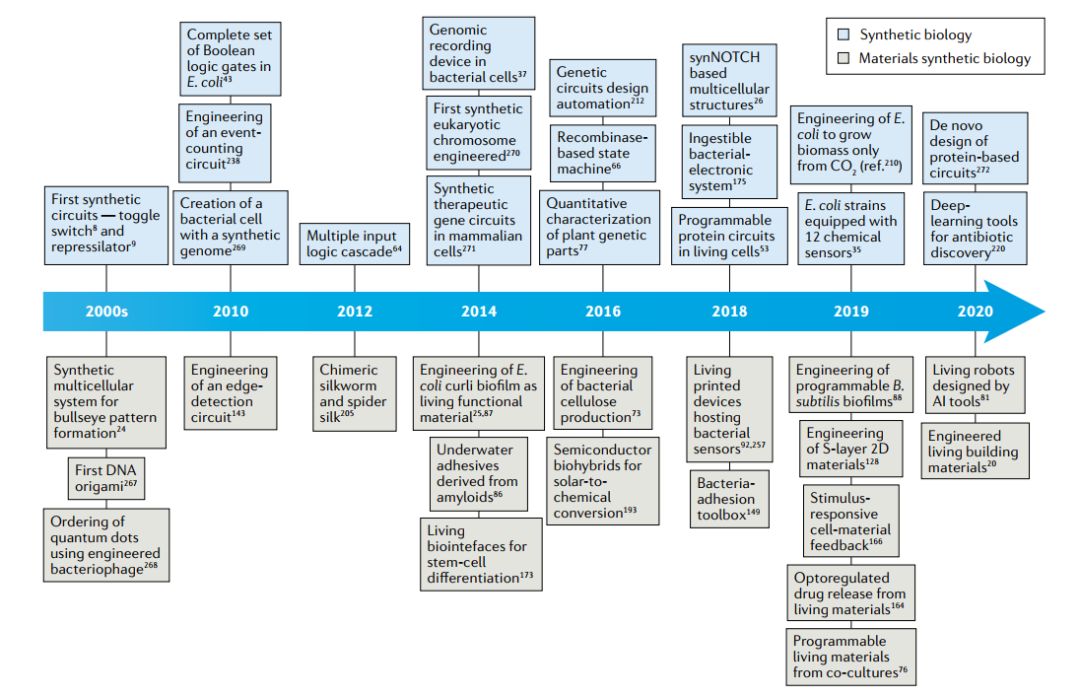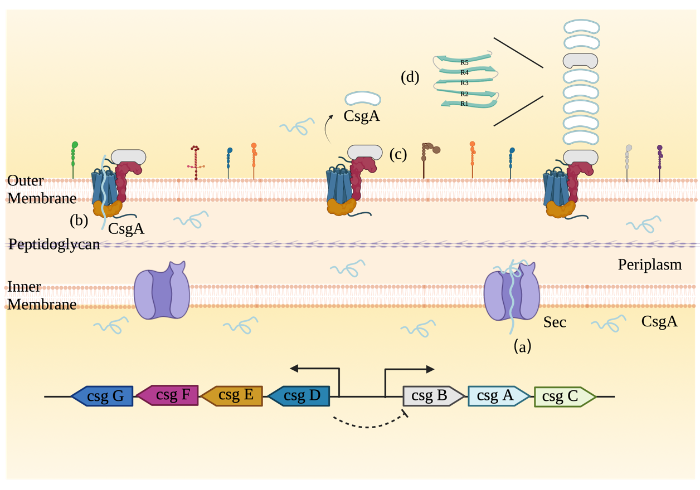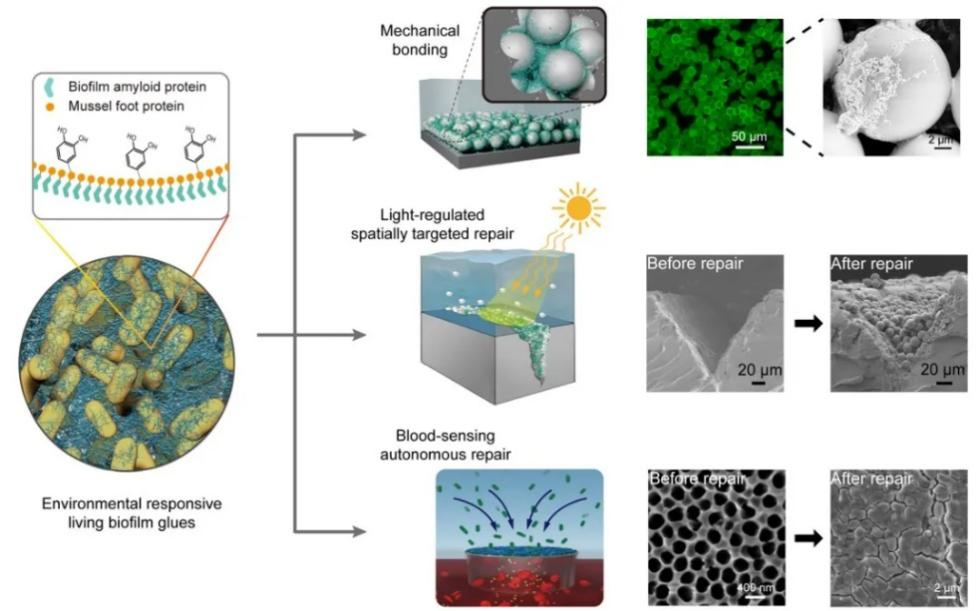
The development and progress of human society cannot be separated from the flexible use of various materials. From the stone and timber of the Stone Age to the modern-day steel and cement, different materials' distinct properties make them suitable for specific purposes.
Usually, human beings categorize traditional materials based on physical properties for different applications. It is obvious that, once production is completed, the physical properties and inherent form of the materials used in human life and industry are challenging to alter.
However, scientists have noticed that many natural biological materials in nature possess autonomous and biometric features, like the self-healing and regeneration functions of human bones. Can we then imbue traditional inert materials with the dynamics features and vital signs of biological systems to achieve self-regulation, self-healing, environmental responsiveness, and long-term sustainability?
Based on the development of synthetic biology, researchers may find the answer in the field of material synthetic biology. Current studies on material synthesis biology are effectively integrating the dynamic features of natural life systems into traditional materials, making them self-adaptive, self-healing, and self-multiplying.
"All biological materials in nature are driven by genes to a great extent, and can reshape their own properties according to the evolution of genes. In fact, many excellent properties have evolved by adapting to the environment, providing new inspirations for the field of biomimetic materials. " Dr. Zhong Chao from Institute of Synthetic Biology, Shenzhen Institutes of Advanced Technology, Chinese Academy of Sciences (hereinafter referred to as "Institute of Synthetic Biology") introduced.

Picture 丨 Zhong Chao (Source: from the interviewee)
Currently, Zhong Chao serves as the Assistant Director of Institute of Synthetic Biology and Director of the Materials Synthetic Biology Center. As a frontrunner in the field of materials synthetic biology, he has successively obtained major scientific research projects such as the National Science Fund for Distinguished Young Scholars (2022-2026) and the NSFC Joint Fund for Large-scale Scientific Facility (2020-2023), served as the chief scientist of synthetic biology in the national key R&D program, and won many honors such as young expert in the National Key Talent Introduction Plan and Scientific Chinese of the Year. He has published more than 30 papers in many top academic journals such as Nature Review Materials, Nature Nanotechnology, Nature Chemical Biology, Science Advances and Advanced Materials.
Zhong Chao pursued his bachelor's degree at Tianjin University. After receiving his Ph.D. from Cornell University in 2009, he worked as a postdoctoral fellow at the University of Washington (Seattle) and the MIT Synthetic Biology Center.
In 2014, after returning to China, he worked as a project leader and researcher at ShanghaiTech University to carry out research work related to living functional materials. He has been working at the Materials Synthetic Biology Center in the Institute of Synthetic Biology since March 2020.
Viable and Self-healing Living Functional Materials
Material synthetic biology is an intersection between materials science and synthetic biology. In 2020, Zhong Chao's team and Lu Guanda's team from MIT jointly published a paper, first defining this emerging interdisciplinary research field, which integrates the engineering principles of synthetic biology and material science to redesign life systems as programmable and dynamic responsive materials with emerging functions.

Picture | Major advancements in synthetic biology and material synthetic biology (Source: Nature Reviews Materials)
"Introducing synthetic biology tools into cell factories, and transforming them into programmable material development platforms, offers the advantage of incorporating new functions into the platforms based on design needs as technologies evolve. This way, new materials suitable for various application scenarios can be created,” Zhong Chao explained.
With the help of advanced synthetic biology tools, living functional materials have become a new research direction in this field in recent years.
Living functional materials are assembled by using engineered living cells, incorporating their self-healing, self-growing and specific recognition properties.
Living functional materials can not only fulfill the tasks of traditional materials but also have the capabilities for self-healing and adapt to different application scenarios through engineering modifications. They also align more with requirements for sustainable development of resources and the environment.
"In fact, many design inspirations for this new direction come from natural biomaterial systems," Zhong Chao introduced. "For example, bones or shellfish materials that we are familiar with are composite materials formed with significant cell participation. These natural biomaterials can perfectly combine the living properties of life systems, including rapid growth capability, self-healing capability and environmental adaptability, with specific material properties. They can dynamically respond to changes in the surrounding environment, and intelligently adjust material properties. These are the ultimate goals that the emerging research direction of living functional materials hopes to achieve."
The development of living materials begins with biofilms. In 2014, Lu Guanda's team from MIT published a paper, which used engineered biofilm curli system (E. coli amyloid protein fiber) to assemble living materials, which officially marked the beginning of the field of living materials.
From the physical properties, biofilm can be regarded as a kind of cross-linked polymer gel composite embedded with colloidal particles. The polysaccharides and proteins in the extracellular matrix ensure the stable structure of the biofilm through entanglement, hydrogen bonding, and charge interactions.
On the other hand, as a phenomenon beneficial for bacterial survival in adapting to the natural environment, the biofilm can appear in any ecosystem, including natural, artificial, and host internal environments. This lays the foundation for the broad application of such materials.

Picture 丨 Molecular Mechanism of Curli Formation (Source: Synthetic Biology)
In 2019, Zhong Chao's research group used curli extracellular secretion and expression and CsgA intracellular induction and expression, purified various functionally editable CsgA monomers through post-processing, and assembled them into array materials in vitro. This array manufacturing technique has potential applications in fields such as biochips and high-throughput biosensors.
In the same year, building upon research in the E. coli biofilm, they developed programmable, 3D-printable living functional materials based on the Bacillus subtilis biofilm. Using this biofilm as a living platform, they integrated adhesive features from marine organisms such as barnacles, mussels, and sandcastle worms, demonstrating for the first time the feasibility of bacterial living glue.
Up to now, based on their initial research, Zhong Chao and his team have further explored the potential applications of living functional materials in medical fields (bone repair and cancer diagnosis/treatment), environmental pollution remediation, and self-healing building materials.
Sustainability and customization are the main advantages of living materials.
In recent years, many studies at home and abroad have proved that living functional materials can break the traditional norms of biopolymer and biomaterial manufacturing. . By delving deeper into biology and materials science, an increasing number of biomaterials are pushing the boundaries of what was previously imagined.
Reflecting on the impact of synthetic biology on traditional material science, Dr. Zhong Chao expressed with emotion.
"The first is sustainability, not only the sustainability of materials, but also the sustainability of production processes and the environment. For example, the recent popular research on spider silk proteins is not only an innovation of traditional industries, but also contributes to the sustainable goal of carbon neutrality and carbon peaking. "
"The second is customization. Synthetic biology technology provides a promising future for customizing the biological functions of materials. By deepening our understanding of the genetic level, structure and function, functional materials can be manufactured to suit various environmental needs.”
Take the smart living glue research he published in 2020 as an example. Many developed adhesive materials meet biological compatibility and adhesive standards. Still, they can't cater to specific situational needs, like environmental sensing or intelligent features.
With the help of synthetic biology technology, Zhong Chao's team used the engineered E. coli as the host for fusion expression of CsgA E. coli biofilm amyloid protein with Mfp3S marine mussel foot silk protein, and integrated the blue light regulatory gene into the gene circuit, so that it could accurately repair specific defects under light control conditions.

Picture 丨 Smart Living Adhesive Materials (Source: Matter)
“Currently, the potential applications of smart living glue will primarily manifest in two directions,” Zhong Chao explains. On one hand, by designing gene circuits, marine microbes can be domesticated, endowed with oil and gas sensing, and adhesive material synthesis capabilities, and then transformed into mini "smart robots" for long-term monitoring and maintenance of submarine oil pipelines.
Picture丨Using "Living" Glue for Spontaneous Repair of Submarine Oil Pipelines
On the other hand, in the field of medicine, a living glue synthesis circuit for sensing blood is designed. Genetically modified bacteria can spontaneously locate and seal bleeding wounds, which will be used for the treatment of chronic intestinal bleeding and other diseases in the future.
Over several years of in-depth work, the research topics under Zhong Chao's team have encompassed functional amyloid protein self-assembly, living functional materials, and semiconductor synthetic biology. The team is also committed to advancing the application of living materials in biomedicine, bioenergy, and bioelectronics.
In March 2021, Zhong Chao and his college classmate Cui Junfeng jointly founded PAM2L Biotechnologies in Shenzhen. According to Zhong Chao, the company's primary goal is to develop bio-based functional materials (including the living materials mentioned above) by using synthetic biology technology and promote them to the industrialization stage.

PAM2L Biotechnologies aims first to break into the fields of medicine and medical devices. In addition, applied research will be carried out in traditional industrial fields. Currently, the company has built databases correlating natural and artificial protein material genetic information with protein structural domains and functions, which closely links artificial intelligence with synthetic biology.
At present, although scientists can now modularly modify and regulate living cells at the genetic level, when it comes to applying gene design and technical principles to material design and performance expectations of complex structures, such efforts are still in their infancy.
Zhong Chao introduced, "To move into applications, we also need to consider the practical challenges in specific application scenarios. In these cases, database-based gene circuit design can greatly accelerate the process."
In December 2021, PAM2L Biotechnologies completed angel round financing of nearly 5 million US dollars, which was exclusively invested by 5Y Capital. 5Y Capital has successively invested in well-known enterprises such as Ctrip, Xiaomi, Xpeng Motors, Kuaishou and Sense Time.
At present, the experimental platform and technical team of PAM2L Biotechnologies have begun to take shape. R&D work on synthetic biology new materials and related pipeline products has officially commenced, with the research and pilot site construction steadily advancing.
"The production capacity of material synthesis biology is vast." Zhong Chao said that not only in the medical field, but also from the existing research, its potential contributions to space exploration, green energy, agriculture, and new material discovery are evident.
Speaking of the future development of synthetic biology, Zhong Chao said: "Many see synthetic biology as an engineering discipline. However, with the gradual development of gene editing and complex gene circuit technology, people can also use synthetic biological tools to explore how life works. This will lead to a deeper understanding of the mysteries of life. Thus, from another perspective, synthetic biology will also boost the development of basic sciences. It holds endless possibilities.”